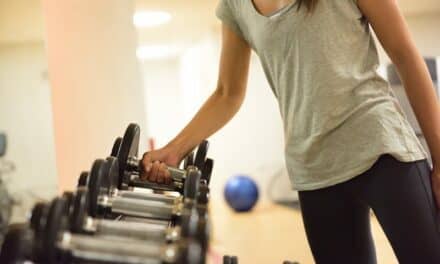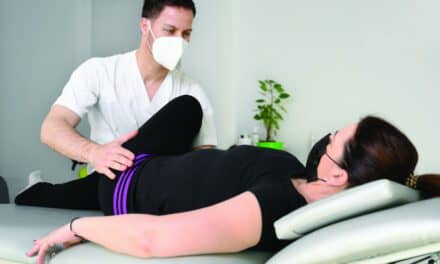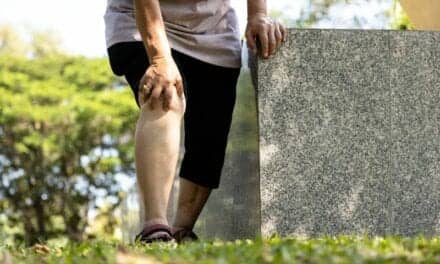PHOTO CAPTION: A mix of simple exercise aids such as fitness balls and more technologically advanced therapy equipment such as gait analysis systems, ergometers, and virtual reality systems help round out the range of products physical therapists count on daily to provide their clients with effective treatment.
Some tools are so essential that physical therapists can’t imagine treating their clients without them.
By Melanie Hamilton-Basich
Physical therapy requires a great amount of learning and skill, and while there’s a lot PTs can do with just their knowledge and their hands, it’s near impossible to meet all of a client’s treatment needs and goals without certain tools for the job. Which tools are considered essential for physical therapy practices has changed over time, says Rosemary Peng, PT, DPT, who works for Kessler Rehabilitation Center in Flanders, NJ.
“There are more objective measurements that we didn’t do before,” says Peng, who’s been a PT for almost 37 years. “Also, we use more exercise equipment rather than hands-on resisted exercises like PNF (Proprioceptive Neuromuscular Facilitation) flexibility training. There are pluses and minuses to that. But I do like many of the new pieces of equipment that are now available.”
Here’s a look at some of the equipment that physical therapists find essential for providing effective treatment in their practices.
Therapy Equipment for Strengthening
Improving strength allows clients to recover from injuries, prevent future injuries, and regain functional movement affected by many conditions, in addition to supporting overall fitness. Equipment that allows focus on specific muscle groups gives therapists a greater ability to meet the specific needs of clients.
Resistance bands, like those from Stretchwell Inc, Warminster, Pa, as well as hand weights and cuff weights can be used to enhance a variety of strengthening exercises with increasing resistance or weight as clients progress. An upper body ergometer (UBE) or arm bike can be used to improve upper body strength for clients with injuries to these extremities or for those with limited lower body strength and can measure the work of the upper body muscles during exercise.
For strengthening the lower body, Peng makes great use of bicycle ergometers (upright and recumbent), the leg press, and the hamstring curl machine. She says a Recumbent Cross Trainer from Plymouth, Mich-based NuStep is a patient favorite where she works, used for people with orthopedic and neurological conditions. “We also use a multi-hip machine for patients with orthopedic and neurological problems,” says Peng. “It’s great for increasing weight bearing on a patient with hemiparesis when the non-affected leg is lifting the bar.”
Meanwhile, a cable column can be used for the upper body, posture muscles, lower body, static positioning, and resisted
walking.
Product Resources
The following companies offer a range of essential products for physical therapy clinics:
Bailey Manufacturing Company
www.baileymfg.com
Battle Creek Equipment
www.battlecreekequipment.com
Clarke Health Care Products
www.clarkehealthcare.com
Merrithew
www.merrithew.com
Multi Radiance Medical
www.multiradiance.com
REAL System
www.realsystem.com
Sore No More
www.sorenomore.com
Stretchwell
www.stretchwell.com
Tri W-G Inc
www.triwg.com
Stretching Therapy Equipment
Incorporating stretching into physical therapy benefits overall health, prevents injury, and increases flexibility and range of motion.
Foam rollers are an inexpensive way to facilitate stretching many different parts of the body. They are available in a wide range of sizes and surfaces from various sources, including Stretchwell, which specializes in the PT market.
Peng says a stretch strap, like the Stretch Out Strap from OPTP, Minneapolis, is an essential tool she uses often with her clients. They are great for stretching the hamstring, quad, and calf.
Fitness balls like the ones available from Merrithew, Toronto, Canada, can aid in deepening a stretch, while also enhancing the effectiveness of exercises performed while balancing on it. These balls are also relatively inexpensive depending on the model and come in a variety of sizes and colors.
Therapy Equipment for Gait and Walking
Clients with a wide range of injuries or conditions could require physical therapy to aid in correcting gait, and many benefit from walking for exercise.
When it comes to more traditional treadmills, Peng says the most important features to her are elevation and having a backward option, and having a program that simulates walking up and down hills is very beneficial.
“We also have a [treadmill gait training system], which provides visual feedback and gives the therapist details about stride length, time on each foot, cycles per second, and step symmetry, which is helpful,” Peng says. “We can document this in the patient chart to record gait problems and progress as they improve.”
Another gait analysis tool is GAITRite from CIR Systems Inc, Franklin, NJ, a portable pressure-sensitive walkway that rolls out and is available in a variety of lengths.
C-Mill from DIH Technology is an instrumented treadmill with force plates and real-time feedback for the objective, in-depth assessment and training of impaired gait and balance in a visual, immersive environment.
And the portable Zeno Walkway from ProtoKinetics, Havertown, Pa, has a wide, flat surface that allows for the capture of loading patterns of the patients’ footsteps without any impedance to assistive device performance to provide accurate gait data.
For clients with gait issues, ankle foot orthoses (AFOs) like those from Allard USA, Rockaway, NJ, can be used to treat foot drop and improve walking patterns.
Balance Training
Balance issues are another common reason people seek physical therapy, often in relation to fall prevention. Both balance boards and BOSU balls help improve balance and posture and increase core strength. Balance boards like those available from Canadian-based FitterFirst come in a range of degrees of tilt angle to accommodate different levels of ability.
For more advanced technology to aid in balance, Peng uses the Biodex Balance System SD from Biodex Medical Systems Inc, headquartered in Shirley, NY. It has been designed to meet the needs of everyone looking to improve balance, increase agility, develop muscle tone, and treat a wide variety of pathologies using touchscreen operation.
Pain Management Modalities
In cases where pain prevents clients from participating in therapy sessions, there are several tools PTs can have on hand to provide relief.
One option is hot/cold therapy packs. Battle Creek Equipment, Freemont, Ind, offers a line of these products, including Thermaphore Classic Moist Heat Packs and Ice It! Cold Therapy. Another source is Southwest Technologies, North Kansas City, Mo, which offers Elasto-Gel hot and cold therapy products.
Topical analgesics can also provide temporary pain relief. They are available in gels, creams, and sprays. Several sources offer topicals to the PT market, including Sore No More, Moab, Utah, which offers Sore No More Natural Pain Relieving Gels for warm therapy and cooling therapy.
Laser therapy is another way PTs can help clients experiencing pain. Multi Radiance Medical, Solon, Ohio, for example, manufactures laser therapy devices that effectively allow physical therapists to use light on the affected area to manage pain and stiffness.
Treatment Tables
Every physical therapy clinic needs different tables that allow therapists to serve their clients. Adjustable tables can make it easier to select the right height for using manual techniques or facilitating exercises, for example. Patients often also sit or lie on tables during evaluation.
Peng relies mainly on mat tables in different sizes that she can raise up and down, as well as some that she says are good for bariatric needs. Bailey Manufacturing Inc, Lodi, Ohio, is one company that offers a wide selection of such tables, in addition to tilt tables and treatment tables, with many motorized table models available.
Virtual Reality
A tool growing in popularity for physical therapy is virtual reality. Peng counts it as essential equipment in her practice. Which makes sense, since it can be used for assessment and rehabilitation to treat a wide variety of conditions. These include issues related to balance, upper and lower limb deficits, and pain management.
One provider of virtual reality for rehabilitation is REAL System, Alameda, Calif. REAL y-Series offers a variety of virtual worlds with rehabilitation activities designed to enable patients to regain mobility, develop strength, and increase range of motion (ROM). It can be used for physical rehabilitation, occupational rehabilitation, and speech-language therapy.
Another example is the virtual reality system from Delaware-based Virtualis. Using the same equipment but different software packages, Virtualis allows therapists to treat a range of conditions through activities like SkiVR and ReflexVR. VertigesVR, for instance, is a set of virtual reality assessment and rehabilitation software packages developed specifically for the treatment of balance disorders. PTP
Related Content:
PT Equipment Purchasing Gets a Second Wind





